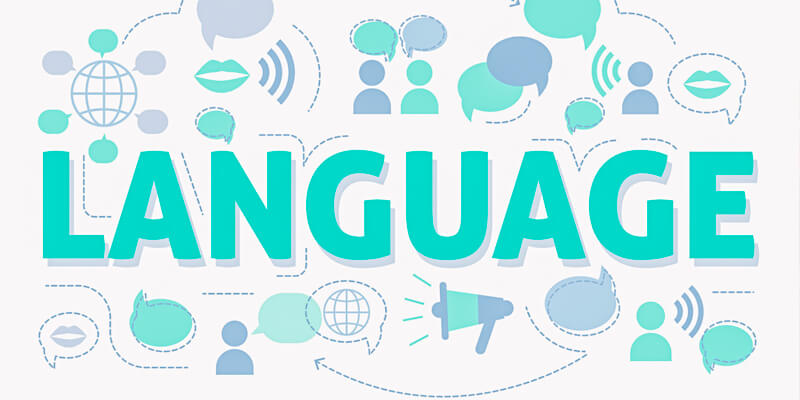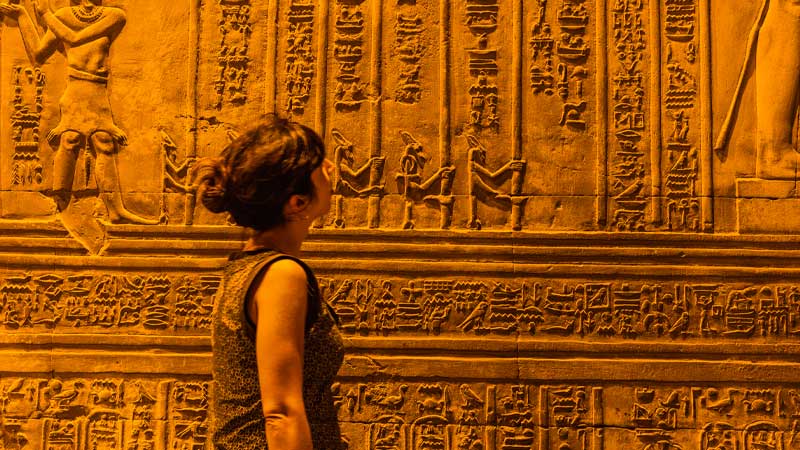When people think of Egypt, they often picture pyramids, pharaohs, and the mighty Nile. But what about language in Egypt? The country’s linguistic landscape is just as rich and complex as its history. From the ancient hieroglyphs carved into temple walls to the modern Arabic spoken in bustling Cairo, language in Egypt tells a story of cultural evolution, conquest, and resilience. Whether you’re planning a trip or just curious, understanding language in Egypt will deepen your appreciation for this incredible civilization.
Key Takeaways
Before we dive in, here’s a quick overview of what this guide will cover:
✔ Modern Languages – What language do people speak in Egypt today?
✔ Ancient Egyptian Language – How did hieroglyphics work, and what happened to them?
✔ Language Evolution – How did Arabic become Egypt’s dominant language?
✔ Useful Phrases – What should you say when visiting Egypt?
✔ Symbols & Mythology – What do ancient Egyptian symbols mean?
✔ Deeper Meanings – Exploring powerful ancient symbols
✔ FAQs – Answering common questions about Egyptian language and communication.
Now, let’s unravel the mysteries of Egypt’s linguistic past and present!
What Language Do They Speak in Egypt Today?
Official Language: Egyptian Arabic
The official language of Egypt is Modern Standard Arabic, used in government, media, and education. However, the everyday spoken language is Egyptian Arabic (Masri), a dialect that differs slightly from other Arabic varieties.
English in Egypt
Due to tourism and business, English is widely understood, especially in cities like Cairo, Luxor, and Sharm El Sheikh. Many Egyptians working in hospitality speak fluent English, making travel easier.
Other Languages
- French – Still spoken among the educated elite.
- Nubian & Berber – Indigenous languages spoken in southern regions.
- Italian & Greek – Found in Alexandria due to historical influences.
Ancient Egyptian Language: Hieroglyphs, Demotic, and Coptic
Hieroglyphics: The Writing of the Gods
The ancient Egyptian language was first written in hieroglyphics, a complex system of symbols representing sounds, words, and ideas. These were used in religious texts and royal decrees. The Libary of Alexandria
How Did Hieroglyphics Work?
- Logograms – Symbols representing whole words (e.g., ☀ = “sun”).
- Phonograms – Symbols representing sounds (like an alphabet).
- Determinatives – Signs clarifying word meanings.
Demotic & Coptic: The Later Stages
- Demotic – A simplified script used for daily life (7th century BCE).
- Coptic – The final stage, written in Greek letters with Egyptian influences (used until the 17th century).
Why Did Ancient Egyptian Disappear?
After the Arab conquest in the 7th century, Arabic replaced Coptic as the dominant language. Today, Coptic survives only as a liturgical language in Christian churches.

Language Evolution: From Pharaohs to Modern Egypt
Before Arabic: Greek, Latin, and Coptic
- Greek & Latin – Used during Ptolemaic and Roman rule.
- Coptic – The last native Egyptian language before Arabic.
The Rise of Arabic
After Islam spread to Egypt, Arabic became the primary language for administration, religion, and daily life. Over time, Egyptian Arabic developed its own unique slang and expressions.
What to Say in Egypt: Useful Arabic Phrases
If you’re visiting, these daily expressions will help:
- Marhaba – Hello
- Shukran – Thank you
- Insha’Allah – God willing (used often in conversation)
- Ma’assalama – Goodbye
- Kam el-thaman? – How much does it cost?
Ancient Egyptian Symbols & Their Meanings
Egyptian mythology is filled with powerful symbols. Here are some key ones:
| Symbol | Meaning |
| Ankh (☥) | Eternal life |
| Eye of Horus (𓂀) | Protection & healing |
| Scarab Beetle | Transformation & rebirth |
| Djed Pillar (𓊽) | Stability |
| Was Scepter (𓏭) | Power & dominion |
These symbols appear in temples, tombs, and artifacts, revealing deep spiritual beliefs.
Deeper Meanings: Ancient Egyptian Symbols
Ancient Egyptian symbols weren’t just decorative – they carried profound meanings about life, power, and the afterlife. Let’s explore some of the most significant ones:
Symbols of Power & Royalty
- The Was Scepter (𓏭) – Represented divine power and authority of the pharaohs
- The Double Crown – Combined Upper and Lower Egypt, showing royalty and unity
- The Nemes Headdress – A striped headcloth symbolizing kingship
Symbols of Transformation & the Soul
- The Scarab Beetle – Represented transformation, renewal, and the journey of the soul
- The Ba Bird – Depicted the soul’s freedom after death
- The Djed Pillar – Showed stability but also death and rebirth
Protective & Lucky Symbols
- The Eye of Horus – Offered protection and healing
- The Ankh – Brought good luck and eternal life
- The Tyet (Knot of Isis) – A feminism symbol representing female power
Sacred Geometry & Symmetry
Egyptian art prized perfect symmetry, seen in:
- The balanced wings of goddesses
- Mirror-image hieroglyphic compositions
- Perfectly proportioned temple designs
These famous ancient Egyptian symbols appear everywhere from tomb paintings to ancient Egyptian icons like Tutankhamun’s mask. Many symbols of Ancient Egypt still fascinate us today, appearing in jewelry, art, and even modern logos.
Where to Learn Ancient Egyptian Hieroglyphs in Egypt
For those fascinated by Egyptian hieroglyphics and eager to decipher the words of the gods, Egypt offers incredible opportunities to study this ancient script firsthand. From specialized courses to world-class libraries housing ancient Egyptian scripts, here’s where you can immerse yourself in the language of the pharaohs.
1. Bibliotheca Alexandrina (Library of Alexandria)
Location: Alexandria
Resources:
- Houses an extensive collection of Egyptian hieroglyphical language materials
- Offers occasional workshops and lectures on ancient Egyptian symbols and writing
- Features rare manuscripts and reproductions of Egyptian hieroglyphics alphabets
Tip: Check their cultural events calendar for hieroglyphics decoding seminars.
2. The Egyptian Museum (Cairo)
Location: Tahrir Square, Cairo
Resources:
- Home to the world’s largest collection of ancient Egyptian hieroglyphics
- On-site Egyptologists sometimes offer short courses
- The museum shop sells beginner guides to hieroglyphics language in ancient Egypt
3. American University in Cairo (AUC)
Location: Cairo (New Cairo Campus)
Courses Offered:
- Periodic non-credit courses on Egyptian language hieroglyphics words
- Access to academic resources about scripts of the ancient Egyptian language
4. Luxor’s Egyptology Centers
Location: Luxor
Opportunities:
- Private tutors and Egyptologists offer personalized hieroglyphics meaning in Egyptian language lessons
- Perfect for studying while surrounded by temples covered in hieroglyphics symbols
5. Online Resources from Egyptian Institutions
Many Egyptian universities and museums now offer:
- Digital archives of Egyptian hieroglyphs
- Virtual courses on understanding the basic symbols in ancient Egypt
Famous Books & Resources for Studying Hieroglyphs
Want to continue your studies? These essential Egyptian mythology books and resources dive deep into the study of ancient Egyptian symbols:
1. “Egyptian Hieroglyphs for Complete Beginners” (Bill Manley)
- Perfect introduction to Egyptian hieroglyphics alphabets
- Includes exercises for decoding real temple inscriptions
2. “The Egyptian Book of the Dead” (Various Translations)
- Contains actual hieroglyphics symbols with translations
- Reveals ancient Egyptian scripts used in funerary texts
3. “How to Read Egyptian Hieroglyphs” (Mark Collier & Bill Manley)
- Step-by-step guide to hieroglyphics language in ancient Egypt
- Uses examples from tombs and artifacts
4. Bibliotheca Alexandrina’s Digital Collection
- Free online access to scans of ancient Egyptian scrips
- Includes academic papers on Egyptian hieroglyphs symbols
5. “Signs and Wonders: Decoding Egyptian Hieroglyphs” (British Museum Publications)
- Explores the religious meaning behind hieroglyphics symbols
- Great companion for temple visits
Pro Tip: While learning, visit these places to see hieroglyphics in context:
- Karnak Temple (Luxor) – Walls covered in ancient Egyptian hieroglyphics
- Valley of the Kings – Royal tombs filled with words of gods
- Edfu Temple – Best-preserved inscriptions of Egyptian language hieroglyphics words
Whether you take a course at the Bibliotheca Alexandrina or study with a Luxor Egyptologist, deciphering hieroglyphics language in ancient Egypt connects you directly to the pharaohs’ world.
FAQs About Language in Egypt
1. What is the official language of Egypt?
Modern Standard Arabic, but Egyptian Arabic is the spoken dialect.
2. Do Egyptians speak English?
Yes, especially in tourist areas.
3. What language did ancient Egyptians speak?
Ancient Egyptian, written in hieroglyphics, Demotic, and later Coptic.
4. Can I learn Egyptian Arabic easily?
Yes! Many online courses focus on Egyptian dialect.
5. Are hieroglyphics still used?
No, but you’ll see them in museums and temples.
6. What are some important symbols in Egyptian mythology?
Key symbols include the Ankh (life), Eye of Horus (protection), and Scarab (transformation).
7. Where can I see ancient Egyptian writing today?
The best places are the Egyptian Museum, temples like Karnak, and tombs in the Valley of the Kings.
Final Thoughts
From the sacred hieroglyphics of the pharaohs to the lively Arabic of modern Cairo, language in Egypt is a bridge between past and present. The country’s ancient Egyptian symbols continue to captivate us with their deep meanings, while modern Egyptian Arabic keeps evolving as a living language.
Whether you’re:
- Deciphering hieroglyphics symbols in a museum
- Bargaining in Arabic at a Cairo market
- Admiring ancient Egyptian icons in temples
…understanding Egypt’s linguistic heritage makes the experience even richer.
Planning a trip to Egypt? Learn a few Arabic phrases and study the symbols – it’ll transform your journey!




